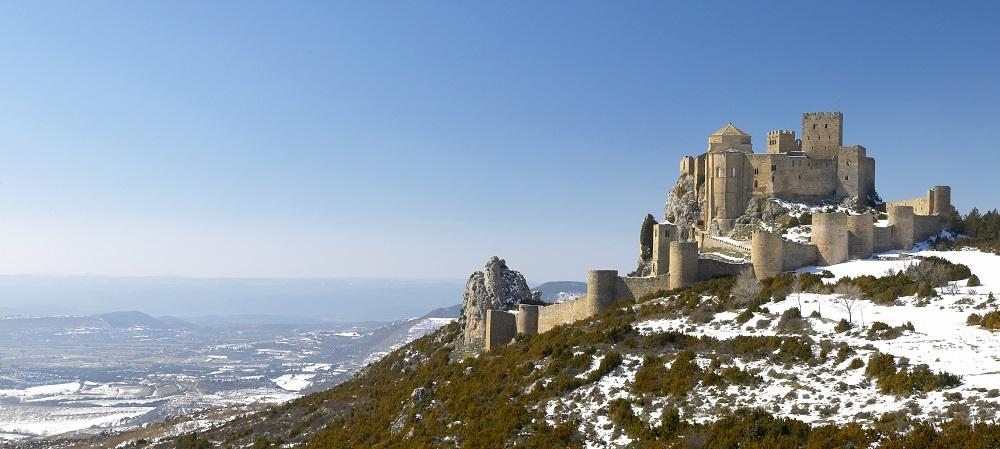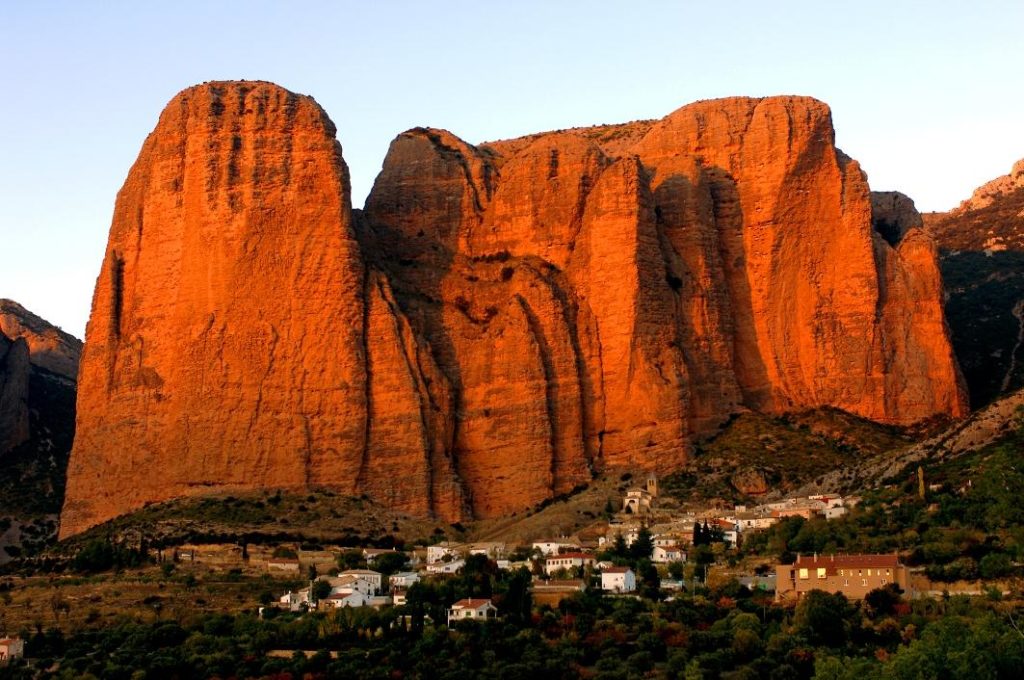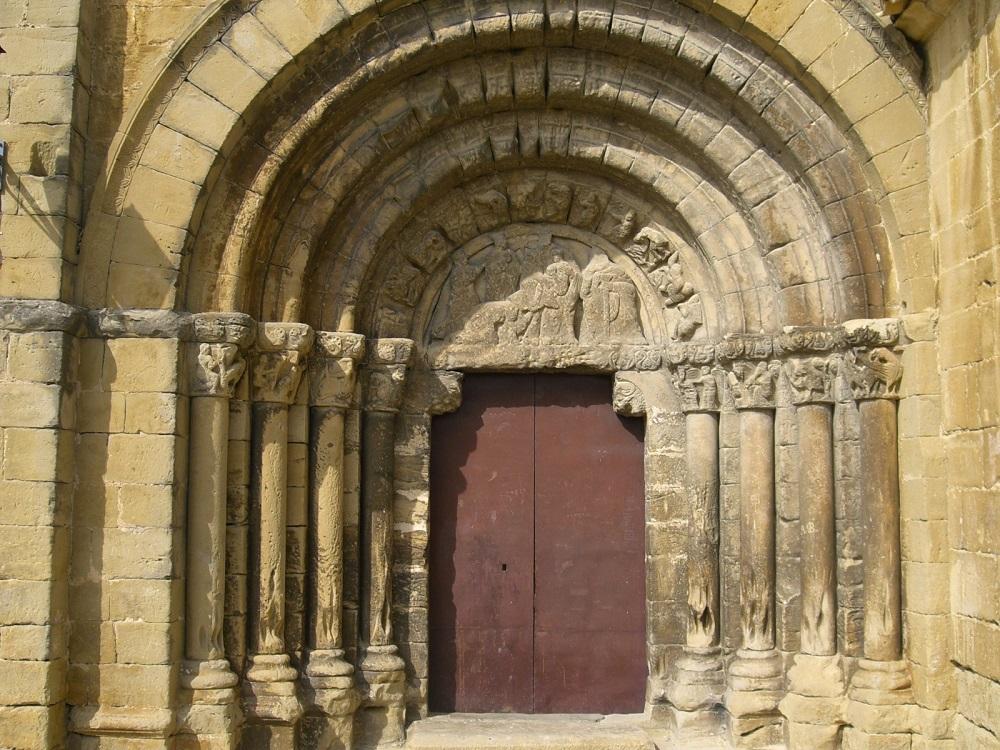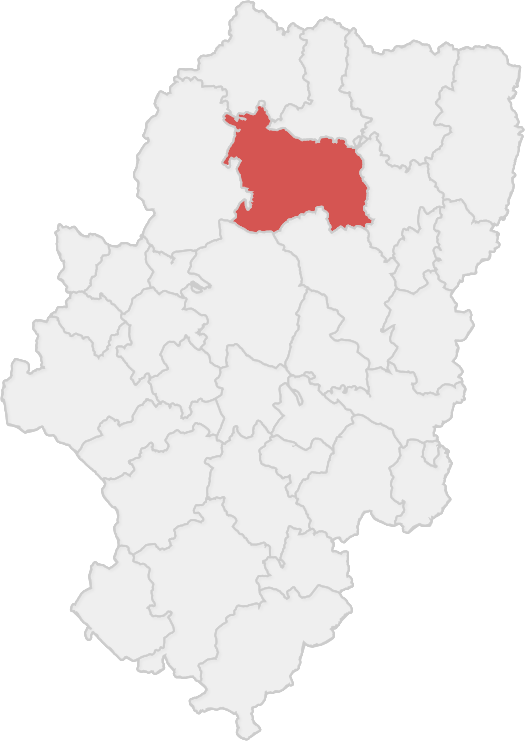La Hoya de Huesca
The region of Hoya de Huesca surprises everyone due to the infinite tourist offers it has. There are resources for all tastes; these are grouped in a radius not exceeding a thirty-minute car journey.
Sensations for all tastes
Lose yourself in the castle of Loarre, contemplate the Mallos de Riglos, play golf in Arascués-Nueno, fly in a light aircraft across the sky over Monflorite, relax in the waters of Arguis or go rafting through the abrupt course of the river Gállego, sensations for all tastes coexist in this land.
In the old quarter of the capital of Huesca, it is easy to be seduced by the cuisine, or by the bar snacks, in order to follow your route amid parks, churches, alleys and avenues. A mere stone’s throw from Zaragoza, its doors are open to adventurers to welcome them with open arms. And what better letter of introduction than to pass through there to get the most out of everything that passes in front of our eyes.
Not to lose sight of
- Basilica of San Lorenzo: Temple dedicated to the saint from Huesca in which the façade and the central tower are remarkable, the atrium, the main altarpiece or the paintings on the sacristy vault. Here is kept the bust of San Lorenzo, which every 10th of August is transported to the cathedral by dancers.
- San Pedro el Viejo: Lying in the interior of the 12th-century church are the tombs of King Ramiro II the Monk and King Alfonso the Battler, in the chapel dedicated to St. Bartholomew.
- Convent of Las Miguelas: Building of the beginning of the 12th century from whose belfry may be obtained one of the most spectacular panoramic views of the city. It belongs to the Carmelites since 1623.
- Church of Santo Domingo: Belonging to the ancient Dominican convent, whose interior is an example of the most faithful Baroque style. Equally outstanding is the facade.

Routes in HOYA DE HUESCA
Some of Huesca’s tourist epicentres are in this region which boasts an enviable historical and cultural background. One of the reasons fostering the booming tourism in this corner of Upper Aragon is its geographical proximity and accessibility. Within a thirty-minute drive, we can visit the extensive list of places that the Hoya de Huesca possesses.
Ascent to the mountains (89 Kms)
Following the compass in a northerly direction, we soon reach Arguis. There the waters of its reservoir form a haven of tranquillity that soon disperses when we continue our way to the small municipality of Belsué. From this point, and traversing the depopulated village of Santa Maria de Belsué, and the also uninhabited Lusera, we arrive in Nocito, a village that gives its name to the same valley and which brings together impressive panoramic views. From there, on foot, the traveller can get lost in the most secluded corners of this upper part of the region.
Sensations next to Loarre (62 Kms)
What was once the land bordering between the Christian and Arabic kingdoms conceals some of the most suggestive artistic manifestations in this region. Towards Ayerbe and taking the turn-off for Esquedas, just after crossing through Bolea, our eyes soon alight on the castle of Loarre, one of the best preserved in all Spain. Without a doubt, it represents an appropriate pretext for exploring some of its spaces, such as the Torre del Homenaje, the Torre de la Reina and the chapel of Santa Maria de Valverde, among others.
Nor will we overlook the remains of the fort that was in Bolea of which remains the tower and the belfry of the collegiate church of Santa Maria.
On the way to Somontano (65 Kms)
On the way to the Somontano region of Huesca, La Hoya reveals small towns that hide important examples of architecture such as the remains of the castle of Count Aranda and the so-called laundry fountain, both in Sietamo, the parish church of Angüés, the medieval town of Casbas de Huesca, where of note too is the Cistercian monastery of Our Lady of Glory. Sieso and its parish church, the central square of Ibieca, or the Romanesque church of Santa Maria del Monte in Liesa, are some of the highlights in this area. In addition, this journey is sweetened by food products such as the different kind of breads and confectionery from Sietamo and Angüés, or the cheeses from Sieso.
Ayerbe and Riglos (106 km)
One of the routes most frequented by adventurous tourists who make their way into the countryside of Huesca with the wise intention of extracting all its charms focuses on these two points. In the first place, Ayerbe, a town located on a hill where the remains of the Moorish castle of Los Muros are to be found. Outstanding amid its network of streets are the parish church, the Romanesque tower of San Pedro, the palace of the Marquises of Urriés or the house in which Santiago Ramón y Cajal lived.
Continuing along this route, we reach Riglos where the imposing stone walls leave the Gállego river and the whole locality in the shadows. The impressive natural landscape stands out, dotted on many occasions by a good number of birds of prey.

Via Lata (56 km)
This route used to lead to the “Sumo port” (Somport) crossing the central axis of the Hoya de Huesca in what has been a historical journey since Roman times. There, the fields of cereal and the steppe birds paint a landscape through which we arrive at Gurrea de Gállego, with the Romanesque church of San Nicolás de Bari or with the Iberian settlement of Gazaperas. From there we can head for Almudévar to contemplate the vestiges of the castle, the fountain of the Tres Caños, the parish church and the shrine of La Virgen de la Corona [the Virgin of the Crown], or approach Alcalá de Gurrea from where you can find rich fauna and an interesting urban centre. The reservoir of the Sotonera is very close.

Sport
Tourism in this part of Huesca not only provides for cultural and historical activities, but extends in other directions such as adventure sports, more sedate ones such as golf and, of course, gastronomy.
The fervent attraction of this sport has led to the opening of numerous courses in our community. And one of these lies at Golf de Guara.
Opened in 1996, the course is set in a privileged natural enclave that can be accessed from Huesca a few kilometres away. It has a surface area whose eighteen holes attract a good number of devotees of this sport. And, naturally, its infrastructure covers equipment rental services (clubs, golf trolleys and buggies), as well as a practice area, an instructor service to help you learn, a bar and restaurant where you can get your strength back.
Without a doubt, a perfect alternative very much in vogue that is still synonymous with leisure and nature.


